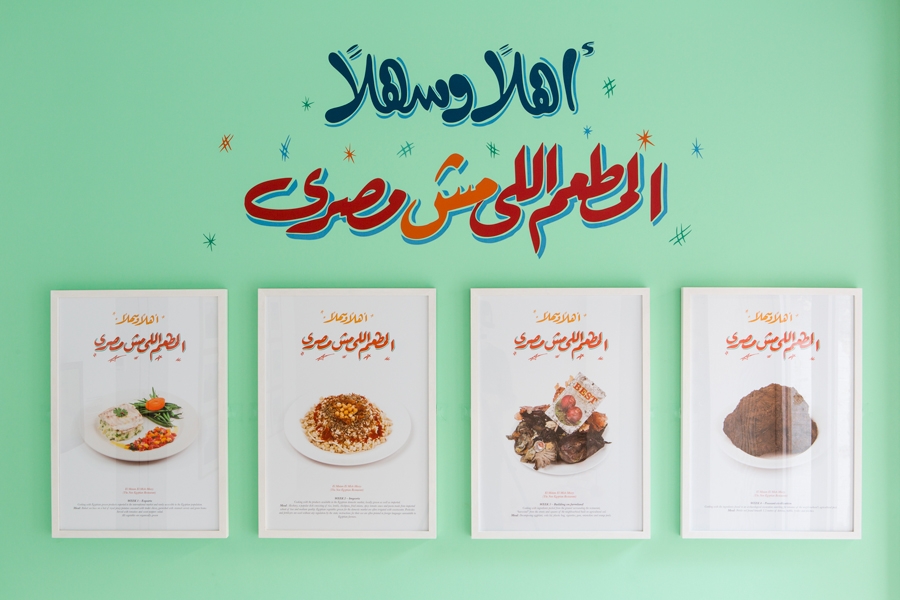As a pretentious twenty-something I once invited a large group of friends to dinner, then equipped them with charcoal and invited them to decorate the walls. Rather than the masterpieces and bon mots that I had hoped for, the result was a living space patterned with obscenities, a rich seam of pornographic slander and a bouquet of vast, hairy cocks and balls splurting enthusiastically across the plasterwork. It was at the time a revelation to me that while you can fill a room with artists and writers, you cannot make them engage in cultural practice – particularly after a well-lubricated dinner.
This lesson came to mind in February as ArtReview’s Oliver Basciano and I – alongside artists Dan Coopey and Maria Georgoula – cooked dinner for 30 in the serene new buildings of the Delfina Foundation, in London, as part of their Politics of Food programme. It was a rare dry day at the very end of a grim winter – our ‘political’ menu included parts of a sheep that had come from one of the UK counties worst affected by the floodwaters that had been making headline news during recent months.
Panic and catastrophe automatically seem high on the agenda when we come to talk about food
The sheep had arrived in parts – bagged up and dripping: very much the stuff of curtain-twitcher’s fantasy – in the back of my cousin’s car. On the day of the dinner, I received heartfelt emails from the farm about the policy of flooding the countryside to save areas of greater population density, how local land had become so drenched that it was sterile and now considered ‘derelict’, and the abandonment of rural areas by urban politicians. The flyer that Delfina had sent out advertised a literal ‘sacrificial lamb’ at the heart of our meal – our flesh-and-blood ovine started to feel cruelly symbolic of the countryside that had produced it, the inhabitants of which evidently felt that their land had been sacrificed to save the cities.
Downstairs in Delfina’s gallery, a strong theme of disaster and devastation permeated the Politics of Food exhibition. Tadasu Takamine’s series of staged films Japan Syndrome (2012) replayed dialogues about post-Fukushima contamination in Japan’s food chain. A film and posters of Asunción Molinos Gordo’s El Matam El Mish-Masry (The Non-Egyptian Restaurant, 2012) documented a food kiosk that the artist had run for three weeks in an informal neighbourhood of Cairo that had grown up on former agricultural land.
In the first week the kiosk served prime Egyptian produce grown for export; in the second, affordable but imported ingredients that formed part of the staple diet of the area; in the third, ‘food’ harvested locally – trash dug from the once rich soil, presented on plates like delicacies. The claymation footage projected from a fibreglass pig’s backside in Candice Lin’s Bacium Sub Cauda (2012) animated the obliteration of hardy local pig species in favour of high-maintenance breeds more acceptable to the international market.
Panic and catastrophe automatically seem high on the agenda when we come to talk about food. Such feelings certainly chimed with the theme of our meal, which we introduced with a discussion of how disconnected British consumers are from the sources of food production, and how badly we would fare as a result should we experience an economic crisis on the scale of those in Greece or Spain.
For feelings of panic and catastrophe to continue high on the agenda while you are actually eating food is quite a different proposition – one perhaps originating in something rather ickier than political territory. Thus as bread was broken and plates filled and then emptied, the conversation shifted away from agricultural crises. We didn’t talk about flooding and agriculture, or the political abandonment of rural communities; indeed this room full of creative practitioners didn’t address many urgent food-related issues at all (though mercifully they didn’t quite hit the lows of daubing the walls of Delfina in obscene graffiti). But in an era when so many of us chew down every meal without speaking, engaged only with a screen in front of us, simply to sit down and share a meal and a conversation – of whatever kind – with strangers in this way already felt like a political opening gesture of sorts.
This article was first published in the April 2014 issue.
